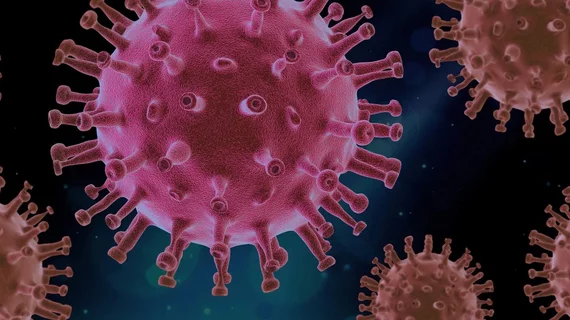Ultrasound shows new promise for destroying COVID-19, other related coronaviruses
Ultrasound waves used at medical imaging frequencies were shown to damage the protective shell around coronavirus strains and could be a key breakthrough in the battle against COVID-19.
That’s according to a new computer simulation study performed by MIT engineers and published in the May issue of the Journal of the Mechanics and Physics of Solids. While the results are preliminary, the researchers believe they open the door for using ultrasound-based treatments to damage different coronaviruses.
“We’ve proven that under ultrasound excitation the coronavirus shell and spikes will vibrate, and the amplitude of that vibration will be very large, producing strains that could break certain parts of the virus, doing visible damage to the outer shell and possibly invisible damage to the RNA inside,” Tomasz Wierzbicki, professor of applied mechanics at MIT, said in a university news story. “The hope is that our paper will initiate a discussion across various disciplines.”
The team modeled the virus as a thin shell covered in nearly 100 elastic spikes and subjected it to a range of ultrasound frequencies.
Vibrations between 25 and 100 megahertz forced the shell and spike proteins to break down and rupture in less than a millisecond, the group reported.
Wierzbicki acknowledged that there’s much more work to be done, but said his team is partnering with microbiologists in Spain to begin testing their approach in pigs. The hope is ultrasound can be used as a therapeutic tool and potentially to treat and prevent infection.
“We looked at the general coronavirus family, and now are looking specifically at the morphology and geometry of Covid-19,” Wierzbicki explained. “The potential is something that could be great in the current critical situation.”

